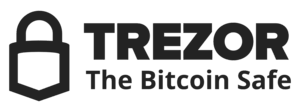Why Governance is the Greatest Problem That Blockchains Must Solve
source: Bitcoin News
2018. Jul. 16. 02:40

A chain is only as strong as its weakest link, and in a blockchain that link lies in the form of its founders. Getting nodes to achieve consensus is easy compared to the difficulty of getting humans to achieve consensus. The greatest challenge that new blockchains must solve isn’t speed or scaling – it’s governance.
Also read: Have You Tried Blockchain 5.0 Yet? Nobody Else Has Either
Governance: Easy to Define, Hard to Achieve
There wasn’t much thought given to on-chain governance when bitcoin was created; Satoshi was too busy reinventing the wheel on several other fronts. But the arrival of bitcoin spawned a wave of blockchains, and with it, the first faltering attempts at introducing a means of reaching consensus between network users, over and above that attained by validating nodes.
Dash first popularized the concept of blockchain governance, which is achieved through the use of masternodes, whose operators can vote on budget proposals. Its system provides a simple means of reaching agreement among community members who are most heavily invested in the project. Scores of subsequent crypto projects, including many that don’t use masternodes, have since copied Dash’s governance model. Often, they’ll tack voting rights onto their token as a means of shoring up its weak use case, but not all projects are as slapdash or cynical with their approach to governance – some aim to genuinely innovate, and in doing so, to overcome the weaknesses that are inherent to human structures.
The Quest for Human Consensus
While bitcoin core has muddled on without any sort of governance, and is all the more decentralized for it, other blockchains have tried to enact more formalized systems of governance. The idea is that by enacting an efficient means of achieving consensus among token-holders, decisions can be made promptly, without sacrificing the decentralized principles that make blockchains so appealing in the first place.
When Tezos was birthed last summer, governance was one of its big selling points. Its protocol promised, “a formal process through which stakeholders can efficiently govern the protocol and implement future innovations”. The subsequent fallout between Tezos foundation members emphasizes the frailties of humans, whose squabbles and power struggles can stymie even the most well-intentioned of projects. Tezos’ off-chain failures, ironically, may have strengthened the case for its onchain system of governance.
Governance is a Tough Nut to Crack
As well-known crypto commenter Nic Carter mused, “Creating a cryptocurrency corrupts… creating a billion-dollar cryptocurrency corrupts absolutely.” Due to the huge economic incentives at stake, getting token-holders to act in the interests of the community, rather than fixating on their own pecuniary gains, is a tall order. Storecoin is a zero-fee, high throughput blockchain whose most interesting feature is not a technical one – it’s a human one.
Its creator, Chris McCoy, explains: “For today’s public blockchains to move past prototypes and low usage dApps – to where entities trust a decentralized blockchain enough to process $10 million+ of utility-based daily transaction volume – blockchains need an enforceable rules engine that has no centralization of power, that key network participants trust, and that is censorship resistant. To shape the future of trade and commerce, blockchains need an enterprise-grade governance [model] that is trusted, enforceable, and reaches finality in a democratic process.”
Storecoin’s governance is inspired by the US constitution, with consensus on change, McCoy explains, “reached by four separate branches that check and balance each other on protocol-level, key people, and monetary policy decisions”. Another blockchain that relies on a constitution, EOS, has come in for flak, prompting its founder Dan Larimer to return to the drawing board to draft a new one. MakerDAO, meanwhile, has been conducting deep research into a “governance risk framework” that aims to diversify trust in trustless systems.
The history of cryptocurrency is littered with hard forks, acrimonious splits, exit scams, lawsuits, and public fallouts. The case for governance does not need to be overstated. But the means of achieving it is a complex task that has taxed some of the cryptoverse’s brightest minds. So long as humans are in charge, internecine conflict and greed will be inevitable. Blockchains can’t eliminate avarice, but that won’t stop their architects from trying their damnedest to divest protocols from the fallible humans who control them.
What blockchain do you think has the best system of governance? Let us know in the comments section below.
Images courtesy of Shutterstock, Twitter, and Storecoin.
Need to calculate your bitcoin holdings? Check our tools section.
The post Why Governance is the Greatest Problem That Blockchains Must Solve appeared first on Bitcoin News.





